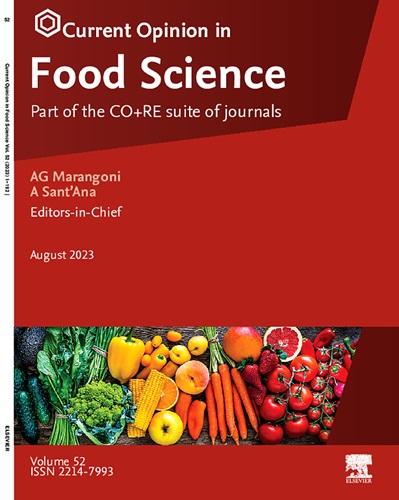对食品中的病原体进行取样和检测:大海捞针和食品微生物组的影响
IF 9.1
1区 农林科学
Q1 FOOD SCIENCE & TECHNOLOGY
引用次数: 0
摘要
微生物测试为食品企业和主管政府当局提供了参考点,以核实食品安全措施是否得到了很好的实施。对于病原体,通常需要在25克食品的一个或几个样品中进行缺失检测;因此,测试程序应该能够检测到极低浓度的细胞。迄今为止,直接检测这些低水平的污染物是不可能的,充分的检测依赖于富集步骤将细胞浓度增加到可检测的水平。病原体的检测机会受内在和外在因素的影响,如细胞在食品批次中的不均匀分布、细胞的生理状态、种内和种内变异性、特定的食品成分和食品微生物组。讨论了非选择性富集和选择性富集的优缺点,以及从食物中检测单一和多种病原体的分子检测方法。本文章由计算机程序翻译,如有差异,请以英文原文为准。
Sampling and testing for pathogens in food: finding the needle in a haystack and the impact of the food microbiome
Microbiological testing provides food businesses and competent governmental authorities reference points to verify that food safety measures are well implemented. For pathogens, often absence testing is required in one or in several samples of 25 g of food; hence, the test procedure should be able to detect extremely low concentrations of cells. To date, direct detection of these low levels of contaminants is not possible, and adequate detection relies on an enrichment step to increase cell concentrations to detectable levels. The detection chance of pathogens is influenced by intrinsic and extrinsic factors such as an uneven distribution of cells in a food batch, the physiological status of the cells, intraspecies and intrastrain variability, specific food components, and the food microbiome. The advantages and disadvantages of nonselective and selective enrichments are discussed, as well as molecular detection procedures to detect single and multiple pathogens from the food they reside in.
求助全文
通过发布文献求助,成功后即可免费获取论文全文。
去求助
来源期刊

Current Opinion in Food Science
Agricultural and Biological Sciences-Food Science
CiteScore
18.40
自引率
4.00%
发文量
157
审稿时长
92 days
期刊介绍:
Current Opinion in Food Science specifically provides expert views on current advances in food science in a clear and readable format. It also evaluates the most noteworthy papers from original publications, annotated by experts.
Key Features:
Expert Views on Current Advances: Clear and readable insights from experts in the field regarding current advances in food science.
Evaluation of Noteworthy Papers: Annotated evaluations of the most interesting papers from the extensive array of original publications.
Themed Sections: The subject of food science is divided into themed sections, each reviewed once a year.
 求助内容:
求助内容: 应助结果提醒方式:
应助结果提醒方式:


